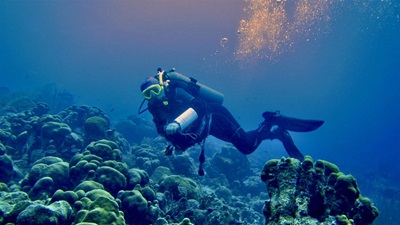US$1 Billion South Pacific Albacore Tuna Market at Risk From Outdated Management
Without new rules, some western and central Pacific Ocean fisheries could lose sought-after ‘ecolabel’

When the Western and Central Pacific Fisheries Commission (WCPFC) – the organization that governs tuna fishing in much of the Pacific Ocean – meets in Manila, Philippines, 1-5 December, the stakes will be high for the South Pacific albacore tuna fishery. At their previous meeting, WCPFC officials failed to adopt a new management style that would protect South Pacific albacore’s long-term sustainability. If the same thing happens this year, the US$1 billion market for this tuna – which is mainly sold canned in the United States, where it is known as “white tuna” – may face severe disruption.
Consumers are demanding more sustainability for their tuna products. And “ecolabels,” such as those issued by the Marine Stewardship Council (MSC), provide fisheries with a valuable sustainability certification that opens access to key markets – and, in some cases, are required by major retail buyers. However, some South Pacific albacore fisheries are set to lose their MSC label if the WCPFC does not adopt a new, more modern management approach, known as a management procedure (MP), this year.
Starting in 2026, MSC will require South Pacific albacore fisheries to have an MP in place to receive (or keep) its ecolabel. If WCPFC members decide not to adopt an MP this year, certifications could be lost, and the financial ramifications for industry could be enormous, especially for the Pacific’s small island developing economies that rely on fisheries for their livelihood and government revenue.
Why a management procedure for South Pacific albacore?
An MP, also called a harvest strategy, is a long-term, science-based approach to managing fisheries that helps to eliminate annual, often-politicized negotiations of catch limits. Under an MP, commission members would agree in advance on benchmarks to govern future changes in allowable catch. For example, if scientists determine that the South Pacific albacore population is healthy, catch levels would stay the same or could even increase over time. But if the population declines, limits would go down by pre-agreed amounts.
A path forward
Since last year, South Pacific island States and Australia have led the push for MP adoption, and they are continuing to champion the effort. Scientists have already evaluated close to 40 potential MPs for their effectiveness in meeting specific objectives related to the health of the South Pacific albacore fishery, and all that’s left is for managers to choose the best one.
The analysis has been done. The science is clear. And the consequences of inaction could be disastrous for South Pacific communities. WCPFC managers must step up and adopt an MP for South Pacific albacore without delay.
Glen Holmes and Dave Gershman are senior officers with The Pew Charitable Trusts’ international fisheries project.









